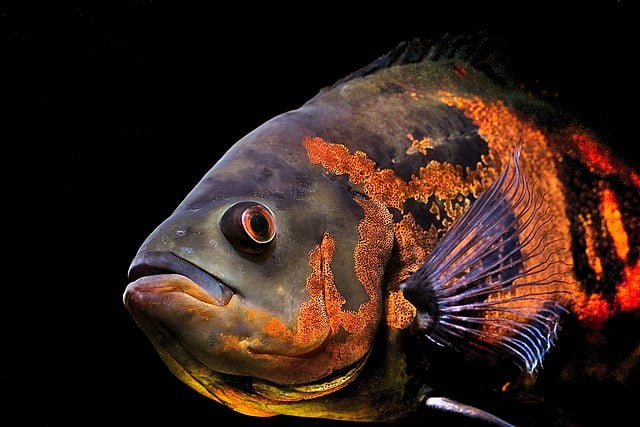
The Pacific white shrimp, Litopenaeus vannamei, is a commercially important species for the global shrimp industry. Its efficient growth and adaptability make it a popular choice for shrimp farms. However, maximizing shrimp health and production requires optimizing their diet.
A team of researchers from the Institute of Aquaculture at the University of Stirling and Wageningen University and Research investigated the nutritional profile, growth performance, and feeding behavior of L. vannamei juveniles about food types (steam-cooked pellets versus extruded pellets), protein sources (soy/peas versus fish meal), and different salinity levels (5 ppt and 30 ppt).
Shrimp Feeding
The shrimp farming industry faces significant obstacles, particularly in feeding practices. Inefficient strategies lead to high costs, food wastage, and water pollution.
Unlike humans, shrimp heavily rely on their sense of smell (chemoreceptors) to find food due to their limited vision. These small animals use specialized sensors on their antennae, mouthparts, and legs to locate and consume food efficiently. However, their limited digestive capacity requires small, frequent meals, often resulting in food wastage and environmental contamination.
Marine shrimp feeding behavior is mediated by:
- Chemoreceptors: Shrimp rely on chemical signals to detect food due to their limited vision.
- Continuous Feeding: Their feeding behavior involves frequent intake of small amounts.
- Feeding Sounds: Clicking sounds, produced during feeding, may be influenced by food texture.
On the other hand, factors affecting shrimp feeding behavior include:
- Physiological Changes: Factors such as molting and stress can affect feeding behavior.
- Environmental Conditions: Salinity and water quality influence shrimp feeding.
- Food Types and Composition: Food ingredients and processing methods influence shrimp feeding behavior.
Food Source Matters
Food ingredients and chemical composition significantly influence shrimp feeding behavior. Commercial foods are designed with specific attractants to activate shrimp chemoreceptors.
The research explores various protein sources, both plant-based (soybean meal) and marine-based (fish meal), to reduce dependence on costly fish meal. However, alternative proteins often require supplements due to incomplete amino acid profiles. Additionally, processing methods such as extrusion and steamed have a significant impact on food quality, digestibility, and environmental footprint.
Stay Always Informed
Join our communities to instantly receive the most important news, reports, and analysis from the aquaculture industry.
The Experiment: Exploring Feeding and Salinity Effects
The study, conducted over eight weeks, examined the influence of:
- Food Processing: Extruded pellets vs. steamed pellets
- Protein Source: Soy/peas vs. fish meal
These foods were tested under two salinity conditions:
- High salinity (30 ppt) for the first 30 days
- Reduced salinity (5 ppt) for the last 15 days
Key Findings: Weight, Survival, and Lipid Content
- Weight: Interestingly, no significant differences in shrimp weight were observed among different foods and salinities.
- Survival: Survival rates were generally high, at 30 ppt (80-97%), but decreased with lower salinity. Particularly, shrimp fed steamed pellets (D2 and D4) showed significantly higher survival rates (80.00% and 76.67%, respectively) compared to those fed extruded pellets (D1 and D3) at 5 ppt (p<0.05).
- Lipid Content: Shrimp fed steamed diets (D2 and D4) had higher lipid content (6.79% and 6.36%, respectively) compared to extruded diets (p<0.05).
Shrimp Feeding Behavior Observations
- Food Attraction: At high salinity (30 ppt), fish meal-based diets (D3 and D4) significantly attracted more shrimp compared to soy/pea diets (D1 and D2). This suggests that fish meal may have a stronger food attractant.
- Click Analysis: Clicks are an indicator of shrimp feeding activity. The study revealed:
- Shorter click durations for extruded and soy/pea diets (D1 and D2)
- Longer click durations for fish meal diets (D3 and D4)
- Higher click frequency (number of clicks) for fish meal diets
- The lower number of clicks (but potentially longer interaction time) for extruded diets
Going Deeper
The study highlights the importance of personalized feeding strategy for L. vannamei shrimp. Here’s a breakdown of key factors:
- Food Processing Type: Extruded pellets may offer benefits for efficient feeding due to their structure, while steam-cooked diets could enhance survival at lower salinity levels.
- Protein Source: Fish meal appears more attractive to shrimp and provides essential nutrients for growth and lipid deposition. However, steam-cooked soy and pea diets could offer a more sustainable alternative with further nutrient optimization research.
- Environmental Factors: Salinity plays a role in shrimp feeding behavior and survival. This study emphasizes the need to consider salinity fluctuations when designing feeding regimes.
Significance for Shrimp Producers
Understanding how food processing, protein source, and salinity interact can significantly improve shrimp farm management. By implementing a strategic feeding plan considering these factors, shrimp farmers can:
- Enhance shrimp survival rates and growth performance.
- Optimize food utilization and reduce wastage.
- Promote environmentally sustainable aquaculture practices.
Conclusion
This study provides valuable insights for optimizing shrimp aquaculture through strategic food management. By considering the interaction between food processing, protein source, and environmental factors, shrimp producers can ensure the health, growth, and sustainability of their Litopenaeus vannamei populations.
Contact
Amina Moss
Institute of Aquaculture, University of Stirling
Scotland, United Kingdom
Email: amina.moss@stir.ac.uk
Reference (open access)
Amina S. Moss, Adam J. Brooker, Stella N. Ozioko, Marit A. J. Nederlof, Sudip Debnath, Johan Schrama. 2024. Effects of Feed Processing Type, Protein Source, and Environmental Salinity on Litopenaeus vannamei Feeding Behaviour. bioRxiv 2024.03.14.584959; doi: https://doi.org/10.1101/2024.03.14.584959
Editor at the digital magazine AquaHoy. He holds a degree in Aquaculture Biology from the National University of Santa (UNS) and a Master’s degree in Science and Innovation Management from the Polytechnic University of Valencia, with postgraduate diplomas in Business Innovation and Innovation Management. He possesses extensive experience in the aquaculture and fisheries sector, having led the Fisheries Innovation Unit of the National Program for Innovation in Fisheries and Aquaculture (PNIPA). He has served as a senior consultant in technology watch, an innovation project formulator and advisor, and a lecturer at UNS. He is a member of the Peruvian College of Biologists and was recognized by the World Aquaculture Society (WAS) in 2016 for his contribution to aquaculture.




